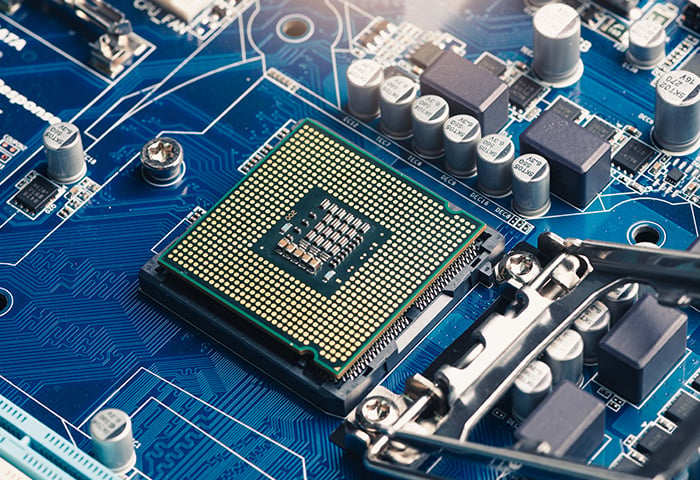Why should I upgrade my RAM?
Random access memory, or RAM, is the short-term memory portion of your computer’s brain. Your computer uses its RAM to temporarily house any data it needs right now, or that it will access in the immediate future. That way, it doesn’t have to comb through all the information sitting on your hard drive. In other words, computers load data into their RAM for speedy access.
That’s why a PC memory upgrade is one way to boost your computer’s speed and performance. The more RAM your computer has, the smoother everything feels and runs. You’ll experience faster startup times, more browser tabs with no interruption, higher FPS (frames per second) when gaming, more freedom to multitask with different apps, and an all-around snappier experience.
Ready to give it a whirl? Read on for our complete PC memory installation guide.

What does upgrading RAM do?
Upgrading RAM gives your computer the critical resources it needs to temporarily shuffle data from the hard disk to the CPU to process it. Even the fastest solid-state drives (SSD) are sluggish compared to how quickly RAM can get your computer the information it needs. Without RAM — or without sufficient RAM for whatever it is you’re doing — your computer would become unbearably slow or not even work at all.
Generally, people add more RAM in order to:
Notice that all the reasons listed above directly relate to making your PC faster and more powerful. That’s the primary reason to upgrade RAM.
Are there any risks?
Nothing ventured, nothing gained! Performing your own RAM upgrade isn’t without its dangers. Chiefly, you risk damaging your computer’s sensitive internal components — though this is possible any time you open it up to poke around or even just clean out a bit of dust. You will likely also void your manufacturer’s warranty, if you have one.
Read on to learn about the most important factors to consider in advance, so that when it’s time to upgrade your RAM, you’ll know exactly what to do.
And if you’d rather not upgrade your RAM, you can still get more performance out of your computer with a specialized PC optimization tool. AVG TuneUp automatically deletes junk files, disables unneeded software, and performs a whole range of other efficiency-boosting tasks to keep your PC in top shape.
Choose your new RAM
You’ve got a few key considerations when it comes to how to select RAM for the motherboard of your PC. Before you add RAM to your PC, ask yourself following questions:
-
How much RAM do I currently have?
-
How much RAM do I need?
-
How much RAM can my PC handle?
-
What type of RAM should I get?
That way, you’ll know exactly what type of RAM to buy and how much of it you’ll need.
How much RAM do you currently have?
Your first step is to check the current RAM on your computer. Remember that you’re not looking for your computer’s overall storage space — that’s your hard drive — but for your computer’s available memory.

If you’re using Windows 10, right-click your taskbar along the bottom of your desktop and select Task Manager. You can also open it by pressing Ctrl + Shift + Esc. Select the Performance tab and find your Memory. You’ll see your current RAM displayed in gigabytes (GB).
For a more comprehensive overview of this process, take a look at our guide to checking your RAM on PC.
How much RAM do you need?
Assuming your current RAM is insufficient, how much RAM do you really need? It’s possible to add too much RAM as well as not enough, so you’ll want to answer this question early on.
Consider the following factors when making your decision:
-
Primary use: What will you mainly be using your computer for? Intensive tasks like high-end gaming, video editing, and intensive streaming require much more RAM, so you’ll need at least 16 GB for smooth performance. For normal web browsing or word processing, 8 GB should be enough.
-
Budget: RAM isn’t cheap. While you can find good deals for RAM online, it’s best to buy from reputable vendors with warranties and solid return policies.
-
Limits: Your PC can handle only so much RAM, and if you buy too much, you won't be able to use it all. Read on to learn more about these limits and how you can find this information.
As a general rule, consider 4 GB of RAM as a minimum, but get 8 GB if it’s within your budget. With 8 GB of RAM, you’ll enjoy significantly improved performance. Don’t worry about having 16 GB of RAM or more unless you’re using your PC for more intensive programs and processes.
How much RAM can your PC accommodate?
You can’t just add more RAM to your computer without confirming a few things in advance. Every PC has two limits on its maximum RAM: its motherboard and its operating system (OS). Whichever limit is lower is the maximum RAM for your PC.
Finding your motherboard’s maximum RAM
Your motherboard has a maximum amount of RAM that it can handle and a fixed quantity of RAM slots — the physical spaces where the RAM modules are located. Keep these factors in mind when assessing how to select RAM for your motherboard.

See the four slots in the top-left corner of this motherboard? That’s where your RAM goes. On this specific motherboard, there are four slots available, which is common today.
First, identify the type of motherboard you have. To avoid taking things apart, you can use a third-party tool like Speccy by CCleaner, which will display all your computer’s core information without you having to dig around for it. Identify your motherboard manufacturer and model, then look up its maximum RAM capacity online or in your ownership manual.

RAM modules come in a range of capacities, so even if you have only a few RAM slots, you can meet your motherboard’s RAM maximum by purchasing higher-capacity RAM modules. For example, if your motherboard has four RAM slots and maxes out at 32 GB of RAM, you can install four 8 GB RAM modules.
Make sure the RAM you’re buying is compatible with your motherboard. Today’s RAM is known as DDR4, while the previous generation is referred to as DDR3. A motherboard with DDR4 slots won’t take DDR3 RAM modules, and vice versa.
Finding your operating system’s maximum RAM
All 32-bit Windows operating systems are limited to 4 GB of RAM. Even if your motherboard can accommodate more, your OS won’t be able to do anything with it, and it’ll be wasted.
64-bit operating systems can handle more RAM, but the limits vary from one OS to the next. The 64-bit version of Windows 10 Home can access a maximum of 128 GB of RAM, while 64-bit Windows 7 Home Premium can avail itself of up to 16 GB of RAM. Check online to find out how much RAM your OS can use.
What kind of RAM should I purchase?
If you shop online for RAM, you’ll likely be confused by the various descriptions. Here, we’ll explain some of the more complex terminology, so that you’ll know exactly what you’re buying.
-
DDR4-XXXX (for example, DDR4-3200): This is the frequency of your memory. The cheapest and most common RAM currently runs at 2133 to 2666 MHz. But gamers and content creators might want more power — 3200, 3600, 4000 MHz, or more.
Higher frequency, or “clock rate,” means that the RAM can perform more calculations per second — which means that it can handle more activity than RAM with a lower clock rate. For instance, after running multiple internal tests, our average overall gaming performance increased by around 15% with the scorchingly fast power of 4266 MHz RAM, compared to the more pedestrian speeds seen with 2666 MHz.
-
CLXX/Timings: This is the latency of your memory: the time it takes for the RAM to output data to its pins (the metal bits that plug into your motherboard). For example, you’ll see descriptions like CL16-18-18-38. Here, the RAM takes 16 clock cycles to complete a task. For more details, check out this full technical breakdown of memory timings and their impact.
Just remember: lower latency is better. You’ll also find that super high-clocked memory — 4600 or even 5000 MHz — will have higher latency, which is actually detrimental to performance. The sweet spot for many gamers is between 3600 to 4200 MHz. I’ve personally chosen a kit with 4266 MHZ with a decent latency of 19.
-
Dual Channel vs. Quad Channel: If you purchase RAM, you’ll usually get two modules in a package for “dual-channel” purposes, which essentially doubles the data transfer rate. On professional PCs for workstation use, usually with an Intel Core X or AMD Threadripper CPU, you’ll even get quad-channel.
After you identify the type of CPU or mainboard you have, you’ll know whether you can use dual or quad RAM configurations. There’s a slight difference in overall performance when using a double channel, so it’s always advisable to purchase that kit if you can. Quad-channel memory, however, has only limited effects on speed.
How to upgrade RAM on a desktop PC
With an appropriate amount of RAM in hand, you’re ready to perform a desktop memory upgrade. Here’s how to upgrade your desktop with additional RAM:
-
Shut down your computer and wait for it to cool down completely.
-
Unplug all cords, cables, and accessories.
-
Open your computer’s casing. Consult your owner’s manual for specific instructions about your PC. You’ll likely need to unscrew it, so be sure to remember which screws go where. They may not all be the same type and size.

-
Touch an unpainted metal surface in your computer to discharge static electricity from your body. This will help to protect your computer’s sensitive internal components from accidental damage.
-
Find your RAM. Your owner’s manual will help here.
-
Gently remove your current RAM modules. If your computer uses clips to keep the RAM modules in place, push them to the side. This should also raise the RAM module up, so you can more easily remove it.

-
Carefully insert your new RAM modules by placing the edge with the gold connectors into the RAM slot and pushing the module into place. Align the notch in the RAM module correctly so that it slides all the way into the slot. Only touch your RAM modules by the corners and edges — not along the tops, and never touch the gold connectors!

-
Replace your computer case.
-
Plug all your cables and connectors back in.
How to upgrade RAM on a laptop
Is there a way to increase RAM on a laptop? As long as you haven’t reached your system’s maximum RAM, then yes! The same considerations that apply to desktop RAM also determine how much RAM your laptop can handle.
Additionally, some laptops may not be eligible at all for RAM upgrades. Sometimes, the RAM modules are soldered directly onto the motherboard, meaning that you can’t remove them yourself. Check online to see whether your laptop has replaceable RAM.
Assuming your laptop can handle more RAM, here’s how to add it:
-
Shut down your laptop, close it, and let it cool down.
-
Unplug all cords, cables, and accessories.
-
Flip it over and place it face-down on your work surface.
-
Open the bottom casing, or remove the portion that covers your RAM. The specifics here will depend on the type of laptop you have. If you need to unscrew the case, remember which screws go into which holes, as sizes may vary from one screw to the next.
-
Touch an unpainted metal surface in your laptop to discharge any static electricity from your body. This will help protect your laptop’s sensitive internal components.
-
Remove your current RAM modules by gently pushing aside the clips that hold them in place. Each RAM module should pop up and out at an angle. Then you can pull it out of the RAM slot.
-
Pick up your new RAM modules by the edges or corners. Do not touch the gold connectors or any components on top of the module!
-
Align the notch on your new RAM module correctly with the RAM slot, then insert it. Push it down until it locks into place.
-
Press down on the RAM module so it lies flat inside your laptop. The clips should slide back into place.
-
Replace the back casing of your laptop, flip the laptop back over, then plug all your cables and cords back in.
Check your RAM upgrade
After installing new RAM, turn your computer on and check its RAM again to make sure that everything is working properly. You can head back to the Task Manager as described above, or you can right-click This PC from your desktop and select Properties.

Look for your computer’s memory information and verify that the total amount of memory shown matches the RAM you’ve just installed. If so, congratulations — you’ve successfully upgraded your RAM!
Anytime you've installed new internal components, consider stress-testing your PC to assess their stability.
Where to purchase more RAM
You can buy your new RAM either online or in-person at a computer retailer — but either way, do your research in advance. RAM is expensive, and you’ll want to know that you’re protected with dependable warranties and return policies in case you buy the wrong RAM or in case it doesn’t work properly. Always buy RAM from a reputable supplier.
Going with new RAM is generally the safest option, but it’ll also be more expensive. You can also buy RAM from a qualified refurbisher — meaning that it’s been restored to like-new condition — but note that while it’ll be cheaper than brand-new RAM, your warranty protection won’t last as long. Lastly, you can buy secondhand RAM, but you’re often doing so at your own risk, without any aftersales protections at all.
There’s more to great PC performance than RAM
RAM isn’t always the most important aspect of PC performance, the way many people think it is. You can have all the RAM in the world — or at least, all the RAM your computer can handle — but if the rest of your PC isn’t optimized to perform effectively, you’ll still be stuck in the mud.
AVG TuneUp removes all the useless software, junk files, and other digital gunk to boost your PC’s speed and get it back into shape. Before cracking your computer open for a RAM upgrade, try seeing what it can do when it’s free to perform at its best. And even after installing new RAM, AVG TuneUp will ensure that you maximize the value of all that new memory.
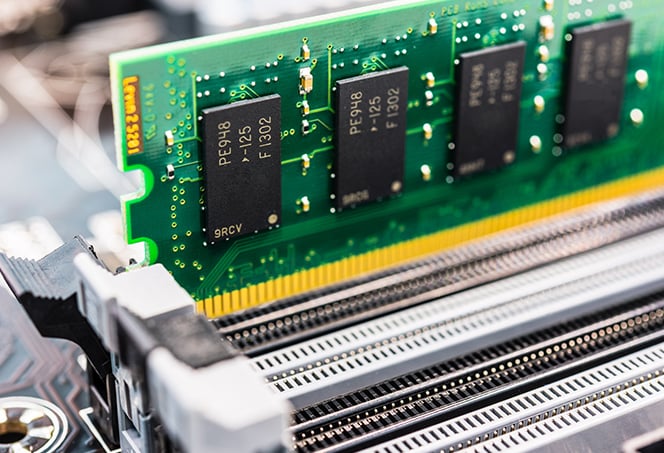








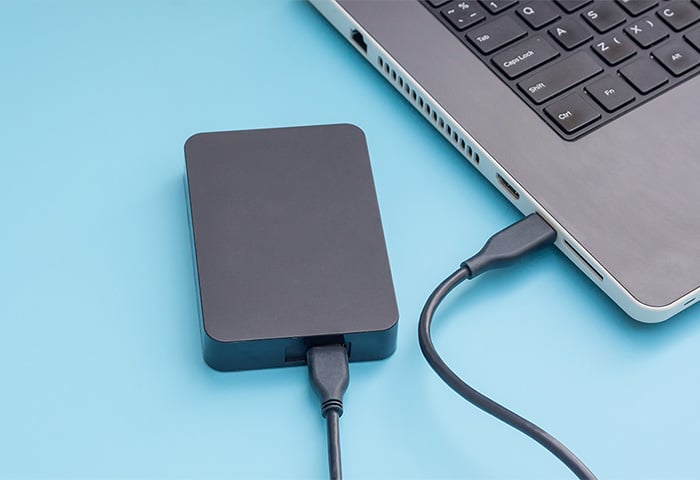
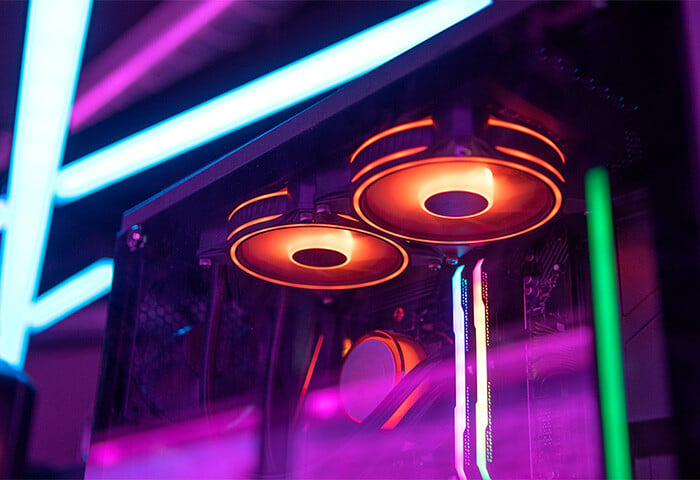


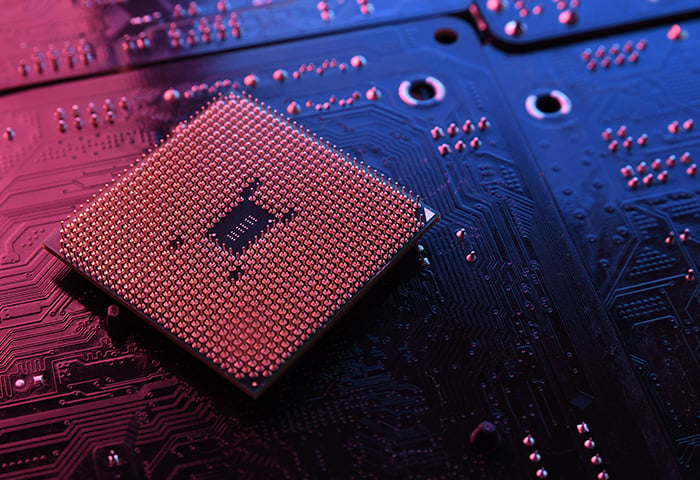
/Signal-How-to-scan-and-fix-hard-drives-with-CHKDSK-in-Windows-Thumb.jpg)




